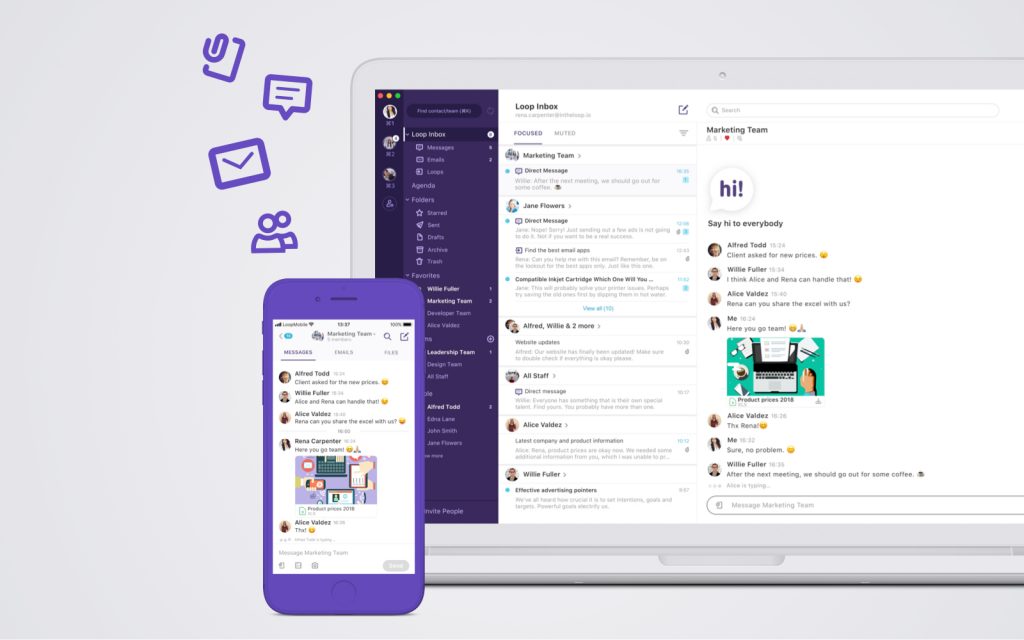According to a Stanford study, the perception of working together on a given task can significantly boost performance of an individual team member. So why should sales teams be any different?
We know what you’re thinking: “Most winning salespeople are very individualistic, not team players!” In some ways, you might be right. The traditional world of sales has consisted of “lone wolves” – energetic individuals who persist and work independently.

But as the world is changing, so are the best sales approaches and many companies are adopting the power of teamwork. This collaboration has some important benefits – not only for your company but also for the stubborn salespeople you have in mind right now, thinking “This will never work for Mike!”?
“The results showed that simply feeling like you’re part of a team of people working on a task makes people more motivated as they take on challenges.” – Stanford
There are numerous benefits of teamwork that apply to sales as well, but some advantages are specific to sales departments.
- One is mutual support. Making a sales pitch can be stressful. If your sales team pitches to the client in a group, the result is a more relaxed, competent presentation due to a boost of confidence. Other team members can also back up their claims, help them if they forget something or are searching for the right words. The fact that the sale does not rely only on one person can also greatly relieve stress and lead to a better pitch.
- Another is better education and sharing best practices. Working in a team is a great way to introduce new team members to the process as well as practice continuous learning of all members of the sales team. Don’t forget that as the world changes, even senior members can learn from the junior ones from time to time.
- The last benefit of collaboration in your sales department is increased client satisfaction. 75% of clients expect companies to provide a consistent experience across the board and that can only be achieved with efficient collaboration of all employees in the company.
So how can you as a team lead improve collaboration in your sales team?
We have prepared a few practical tips:
Encouraging collaboration between departments
“Organizations with tightly-aligned sales and marketing had 36% higher customer retention rates and achieved 38% higher sales win rates” – MarketingProfs
Building a bridge between different departments in your company is a well-known technique for improving sales. By combining the strengths and the knowledge from different teams, you provide a strong foundation to your sales personnel – the more information you have and the better you combine them, the greater the chance of sales success.
- Do daily or weekly stand-ups where members of sales, marketing, and say, customer support get together and exchange the most important goals and insights from their line of work.
- Make sure the departments share the same metrics. It’s great for marketing to measure the number of leads and the sales to focus on the quantities sold, but if you unify these into a shared goal, the collaboration between the two teams will be easier because they will speak the same language.
- Encourage informal socializing between departments. Invite employees from different departments to join you at lunch. The right team building activities, where you mix up the teams are great for encouraging collaboration as they prevent everyone from always sticking with “their” crowd.
Document success stories and scripts
Has one of your salespeople noticed an increase in sales when using a specific channel, script or approach? Let them share their best practice with their colleagues in a structured way so everyone can learn from it!
There are multiple ways of doing this, we especially recommend writing down the approach in a shared document (it can be a short bullet list) or presenting it to the team during a workshop. Make sure you reward their collaboration – they are sharing their knowledge to help the company and that shouldn’t be taken for granted.
And while sales documents are an important part of a good sales team, it shouldn’t just be a case of everyone copying a single approach – this is where collaboration really makes a difference. Team knowledge can and must be harnessed to create the best sales scripts, so encourage people to work on scripts together.
How to begin writing sales documentation?
- Write it from scratch or use templates you can find online to help you get started
- Don’t invest too much time on the first draft. It’s going to be revised no matter how hard you try. So, try to prepare it in an hour or two. Involve the entire team!
- Start using them as soon as possible to see results in real time. Before using them, let your sales team practice them together and correct them as you go along
- Collect feedback and improve the document continuously. Remember, good sales documents are never really “done or complete”, so include all members of the team to make it better and stronger

Aside from best practices, your sales team can also share their problems and challenges. It’s highly productive to solve problems collectively – it’s faster, offers a wider range of solutions and can improve trust between employees.
Offer a safe environment
By making your team members comfortable, they will be willing to work together as they won’t constantly be worried about sharing their doubts, challenges or mistakes. Communicate clearly that they don’t have to know everything – they just have to do something about it and learn constantly.

Allow for flexibility and pivoting – don’t hold on to the original plan for dear life if it’s not working for your team. Let them innovate until they come up with an approach that suits them.
It also makes sense to encourage existing team members to play an active role in the introductory process of new employees. Assign mentors and develop an introductory process for new sales personnel that includes the entire team, not just the team lead.
Provide the right tools for collaboration
Team members who have access to collective data can make better decisions and problem-solve faster, but only if they are using the right tools. In the current flood of apps, systems and platforms, a common mistake companies make is that they introduce a plethora of different tools that only add to the clutter.
We recommend you try Loop Email – it’s based on email but also connects chat and collaboration in one app. With Loop Email your sales team won’t lose time finding information, getting in touch with other team members or keeping an eye on everything that’s going on with each client.

Offer team-based rewards
As we have established before, salespeople are traditionally very individualistic – a characteristic that is rooted in the system of bonuses and commission. To improve teamwork between them you also need to review and evolve the reward system to encourage collaboration.
How do you do that? Introduce rewards that are tied into communal goals and not just the personal target of each salesperson. One approach is sharing profits or gains from a specific account that the team has been working on with each team members. This builds a sense of ownership among them and encourages greater team performance. Don’t forget that rewards are not only monetary. Non-monetary rewards can vary greatly. From public recognition, better parking spots to actual trophies it’s up to you to think of what your team members will value most. Is it an additional day off? Would the entire team love to take a skiing trip together or will they be proud to be featured in the company newsletter?
Foster transparency
Teamwork is all about trust and trust can only be built if a company fosters honest and transparent communication. There is no room for secrets or hidden agendas as they tend to backfire in the long run. In most cases, it’s actually the lack of time which beaks transparency and leads to information getting lost or hidden but this is where new tools can come in and help ease the sharing process.
Loop Email offers effortless transparency across the team and with a couple of clicks you can chat around emails and share specific ideas – see how it works!

















Add comment